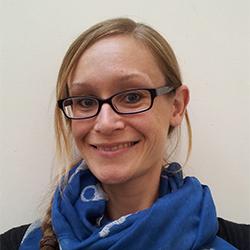My research centres on understanding how past and present variation in human health, growth and morphology is influenced by evolutionary processes (e.g., adaptation, neutral variation, plasticity) and interactions with the natural and social environments. I combine human bioarchaeology with human biology and palaeoanthropology, and previous and current projects include work in South America, South Asia and Europe.
My interests in reproduction lie in the evolution, adaptation and environmental plasticity of the human pelvis; the impacts of evolutionary and environmental factors on pelvic morphology and birth complications; and the impact of early life conditions on later growth and health which may impact on the risk of birth complications.
My recent research has been investigating the evolutionary origins of low lean tissue (organ and muscle mass) among contemporary South Asians. Low lean mass is implicated in the elevated risk of type 2 diabetes and other chronic diseases among South Asians, but the origins of low lean mass is unknown. We have been using clinical imaging from contemporary populations to investigate the relationship between lean mass and skeletal dimensions, and then applying these findings to track patterns of lean mass variation using the South Asian skeletal record from the last 11,000 years.
Since 2016 I have also been the paleoanthropologist at renewed excavations at Shanidar Cave, Iraqi Kurdistan. Shanidar Cave is one of the most famous Neanderthal sites, yielding the remains of 10 men, women and children in excavations led by Ralph Solecki between 1951 and 1960. The new project, led by Professor Graeme Barker, is using modern archaeological science and techniques to refine our understanding of the chronology and stratigraphy of Solecki’s original excavations, and to provide new insight into behaviour during the Palaeolithic. This has included the exciting discovery of significant new Neanderthal remains.
The Old St Bernard's Hospital Project, which I co-direct Dr Kevin Lane (CONICET, Universidad de Buenos Aires) and Professor Clive Finlayson (The Gibraltar Museum and University of Gibraltar), investigates health, diet and migration among skeletons from a 16th-17th century mariner's hospital in Gibraltar.


